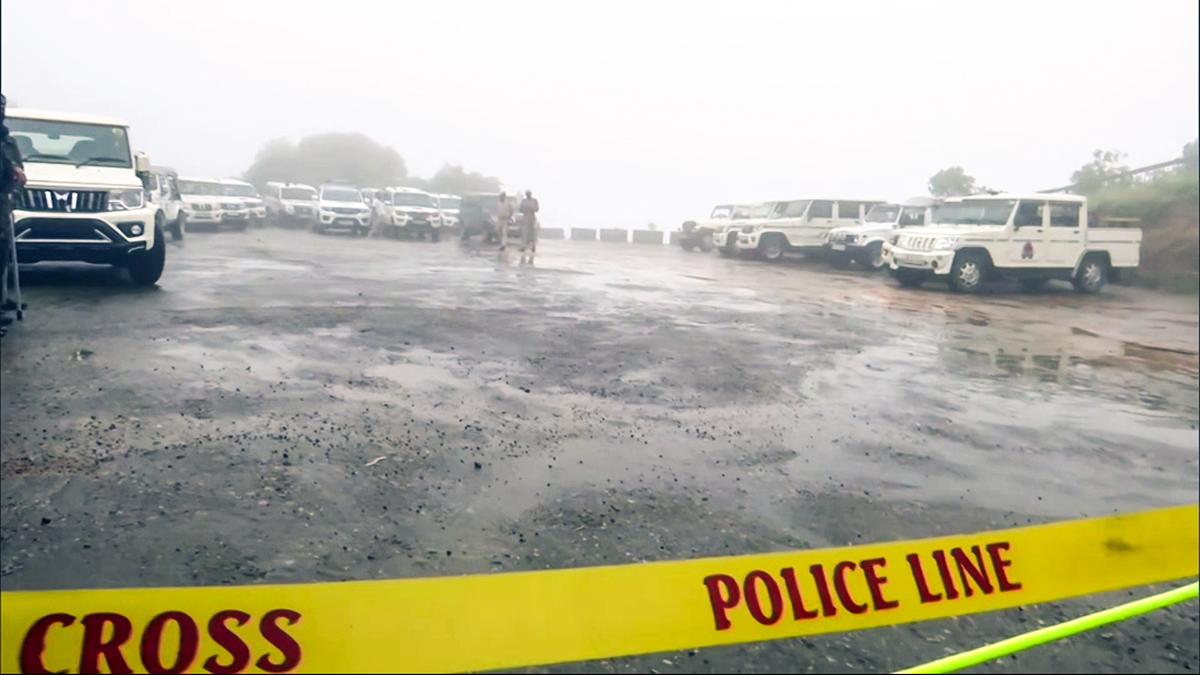 |
|
The Raja Raghuvanshi murder case has taken a significant turn with the Meghalaya Police making crucial seizures and securing the transit remand of another accused. According to Superintendent of Police (SP) Herbert Pyniaid Kharkongor, a gun and ₹50,000 were recovered from the accused. This recovery is a major breakthrough, as it provides tangible evidence linking the accused to the crime. The SP revealed that the seizure occurred following disclosures made by the accused, Raj and Akash, who pointed out the location of the weapon hidden within a bag. This collaborative information played a pivotal role in enabling the police to effectively proceed with their investigation. The interrogation process will further focus on the disposal of laptops purportedly used by the accused. The police are skeptical of the claim that the laptops were merely discarded and will delve deeper to ascertain their actual whereabouts, suspecting that they might be hidden to conceal further evidence. The interrogation aims to uncover any additional insights into the case and to recover potentially crucial digital information stored on the laptops. The recovery of the gun is particularly significant because it directly connects the accused to the act of violence. Firearms are often the primary instruments used in murder cases, and their recovery provides a strong link between the accused and the crime. Ballistic analysis of the gun can determine if it was indeed used in the murder, providing further conclusive evidence for the prosecution. The ₹50,000 recovered is also a valuable piece of evidence. It could represent payment for the murder, funds used to facilitate the crime, or money acquired through illegal activities related to the murder. Tracing the source and intended use of the money could reveal additional conspirators or motives behind the murder. The interrogation of the accused will be critical in piecing together the events that led to the Raja Raghuvanshi murder and in establishing a clear timeline and chain of events. The police will need to employ skillful questioning techniques to elicit truthful information from the accused, who may be reluctant to incriminate themselves or others involved in the crime.
The involvement of Lokendra Singh Tomar, the eighth accused in the Raja Raghuvanshi murder case, adds another layer of complexity to the investigation. Tomar's alleged role in disposing of the pistol and the bag full of money, as well as destroying evidence, underscores the extent of the conspiracy and the efforts made to cover up the crime. His apprehension and subsequent production in court in Gwalior are significant steps towards holding all those responsible accountable. The granting of a three-day transit remand allows the Meghalaya Police to transport Tomar to Meghalaya for further interrogation and investigation. The transit route, which includes Indore, Delhi, and Guwahati, indicates the logistical challenges involved in bringing the accused to the jurisdiction where the crime occurred. Police Station Incharge Rashid Khan outlined the procedure for Tomar's transfer, emphasizing the need for a medical test before the journey to ensure his health and well-being. Assistant District Prosecution Officer (ADPO) Prashant Sharma highlighted the importance of Tomar's involvement in tampering with facts and misleading the probe. This suggests that Tomar possessed crucial information about the crime and actively worked to obstruct the investigation. The police investigation will focus on uncovering the specific details of Tomar's role in disposing of the evidence and his motivations for doing so. Was he acting on his own accord, or was he instructed by others involved in the murder? What was the nature of his relationship with the other accused? These are some of the questions that the police will seek to answer. The involvement of multiple individuals in the Raja Raghuvanshi murder case suggests a well-planned and coordinated criminal enterprise. The recovery of the gun and money, along with the apprehension of Tomar, are significant steps towards unraveling the conspiracy and bringing all those responsible to justice.
The Raja Raghuvanshi murder case highlights the complexities of criminal investigations and the importance of diligent police work in uncovering the truth. The successful seizure of evidence and the apprehension of suspects are testaments to the dedication and professionalism of the Meghalaya Police. The ongoing interrogation of the accused and the investigation into the disposal of evidence will be crucial in building a strong case for prosecution. The collaborative efforts of law enforcement agencies in different states, such as the Meghalaya Police and the Gwalior Police, are essential in apprehending suspects and ensuring that justice is served. The transit remand granted to Lokendra Singh Tomar demonstrates the legal framework in place to facilitate the transfer of accused individuals across state lines for investigative purposes. The Raja Raghuvanshi murder case serves as a reminder of the prevalence of violent crime in society and the need for continued efforts to prevent and combat such acts. The successful prosecution of those responsible for the murder will send a strong message that such crimes will not be tolerated and that perpetrators will be held accountable for their actions. The case also underscores the importance of evidence collection and preservation in criminal investigations. The recovery of the gun and money, as well as the potential recovery of the laptops, are crucial pieces of evidence that can be used to establish the guilt of the accused. The Raja Raghuvanshi murder case is a complex and challenging investigation, but the Meghalaya Police have made significant progress in uncovering the truth and bringing those responsible to justice. The continued efforts of law enforcement agencies and the cooperation of witnesses will be essential in ensuring a successful prosecution and closure for the victim's family.
